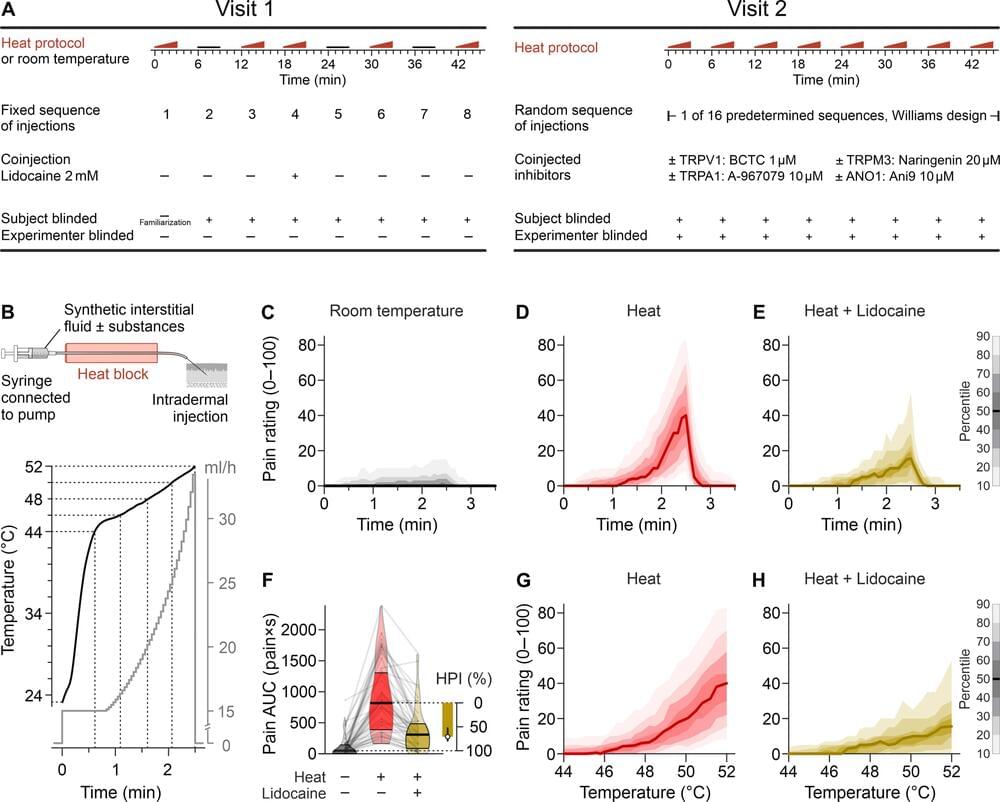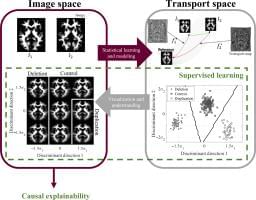Patients with oligometastatic pancreatic cancer showed better progression-free survival after receiving metastasis-directed therapy with chemotherapy. Adding metastasis-directed therapy to chemotherapy showed some benefit in patients with…



“Both galaxies in the Question Mark Pair show active star formation in several compact regions, likely a result of gas from the two galaxies colliding,” said Dr. Vicente Estrada-Carpenter.
How did stars form 7 billion years ago, or approximately halfway between the Big Bang and now? This is what a recent study published in the Monthly Notices of the Royal Astronomical Society hopes to address as an international team of researchers used NASA’s James Webb Space Telescope (JWST) to observe two distant galaxies using the gravitational lensing method, which is a “magnifying glass” that forms around large celestial objects that warp the fabric of space-time. This study holds the potential to help astronomers better understand the conditions in the early universe and the techniques used to study those conditions.
While the gravitational lensing method enables observations of distant objects, those objects also tend to appear distorted due to the space-time warping. In this case, the distant galaxies being observed appear together as a question mark in the JWST images, though astronomers were still able to learn quite a bit about this galaxy. These findings included new insights into star formation, with several stars in the red galaxy exhibiting various stages of formation, including bursty stars, quenching stars, and stars in equilibrium.

A study by the Medical University of Vienna has made important progress in understanding heat perception in humans. The research team was able to identify a specific cell structure that plays a role in recognizing heat. However, most of the protective recognition of heat in everyday life depends on other, as yet unknown structures.

Researchers use AI and models to improve EV battery safety:
One of the electric vehicles’ most critical safety concerns is keeping their batteries cool, as temperature spikes can lead to dangerous consequences.
New research led by a University of Arizona doctoral student proposes a way to predict and prevent temperature spikes in the lithium-ion batteries commonly used to power such vehicles.
The paper “Advancing Battery Safety,” led by College of Engineering doctoral student Basab Goswami, is published in the Journal of Power Sources.
You know the classic game Pong with the paddles and ball that moves across the screen? Imagine the ball and paddles synchronized to music. Victor Tao approached the challenge as an optimization problem to figure out where the paddle and balls should go, based on the beats of a song:
Fortunately there is a mature field dedicated to optimizing an objective (screen utilization) with respect to variables (the locations of bounces) in the presence of constraints on those variables (physics and the beats of the song). If we write our requirements as a constrained optimization problem, we can use an off-the-shelf solver to compute optimal paddle positions instead of designing an algorithm ourselves.
The result is Song Pong, and the Python code is on GitHub. [via Waxy].
Wear your support for the show with a Closer To Truth hoodie, T-shirt, or tank: https://bit.ly/3P2ogje.
What is it about human brains that enable both the regulation of bodily activities and the generation of mental thoughts? What are the mechanisms of human brain function? How do they integrate to give the sense of mental unity? What happens when something in the brain goes wrong—abnormalities, injury, disease? What is the future of brain science?
Dr. Kelsey Martin is Dean of the David Geffen School of Medicine at UCLA as well as a professor of biological chemistry, psychiatry and biobehavioral sciences. Her research focuses on the cell biology of transcription-dependent forms of synaptic plasticity, particularly those underlying learning and memory.
Donate to Closer To Truth and help us keep our content free and without paywalls: https://shorturl.at/OnyRq.
Closer To Truth, hosted by Robert Lawrence Kuhn and directed by Peter Getzels, presents the world’s greatest thinkers exploring humanity’s deepest questions. Discover fundamental issues of existence. Engage new and diverse ways of thinking. Appreciate intense debates. Share your own opinions. Seek your own answers.

We’ve detected that JavaScript is disabled in this browser. Please enable JavaScript or switch to a supported browser to continue using x.com. You can see a list of supported browsers in our Help Center.
Terms of Service Privacy Policy Cookie Policy Imprint Ads info © 2024 X Corp.
The first images are back from a spacecraft that, on Sept. 4, got to within just 102.5 miles (165 kilometers) of the surface of Mercury, the closest it will ever get. The European Space Agency’s $1.8 billion BepiColombo vehicle snapped images of the inner planet’s polar regions and cratered surface as it zoomed by.
The flyby was the seventh of its long journey around the solar system—one of Earth, two of Venus and three of Mercury—as it attempts to lose energy and steer itself into orbit around Mercury during a long and complex journey. This latest flyby reduced the spacecraft’s speed and changed its direction.
During the flyby, which culminated at 21:48 UTC on Sept. 4, BepiColombo took images and tested 10 scientific instruments, which included taking measurements of how the solar wind interacts with the planet’s magnetic field.

Their…
A multi-university research team co-led by University of Virginia engineering professor Gustavo K. Rohde has developed a system that can spot genetic markers of autism in brain images with 89 to 95% accuracy.
Their findings suggest doctors may one day see, classify and treat autism and related neurological conditions with this method, without having to rely on, or wait for, behavioral cues. And that means this truly personalized medicine could result in earlier interventions.
“Autism is traditionally diagnosed behaviorally but has a strong genetic basis. A genetics-first approach could transform understanding and treatment of autism,” the researchers wrote in a paper published June 12 in the journal Science Advances.
